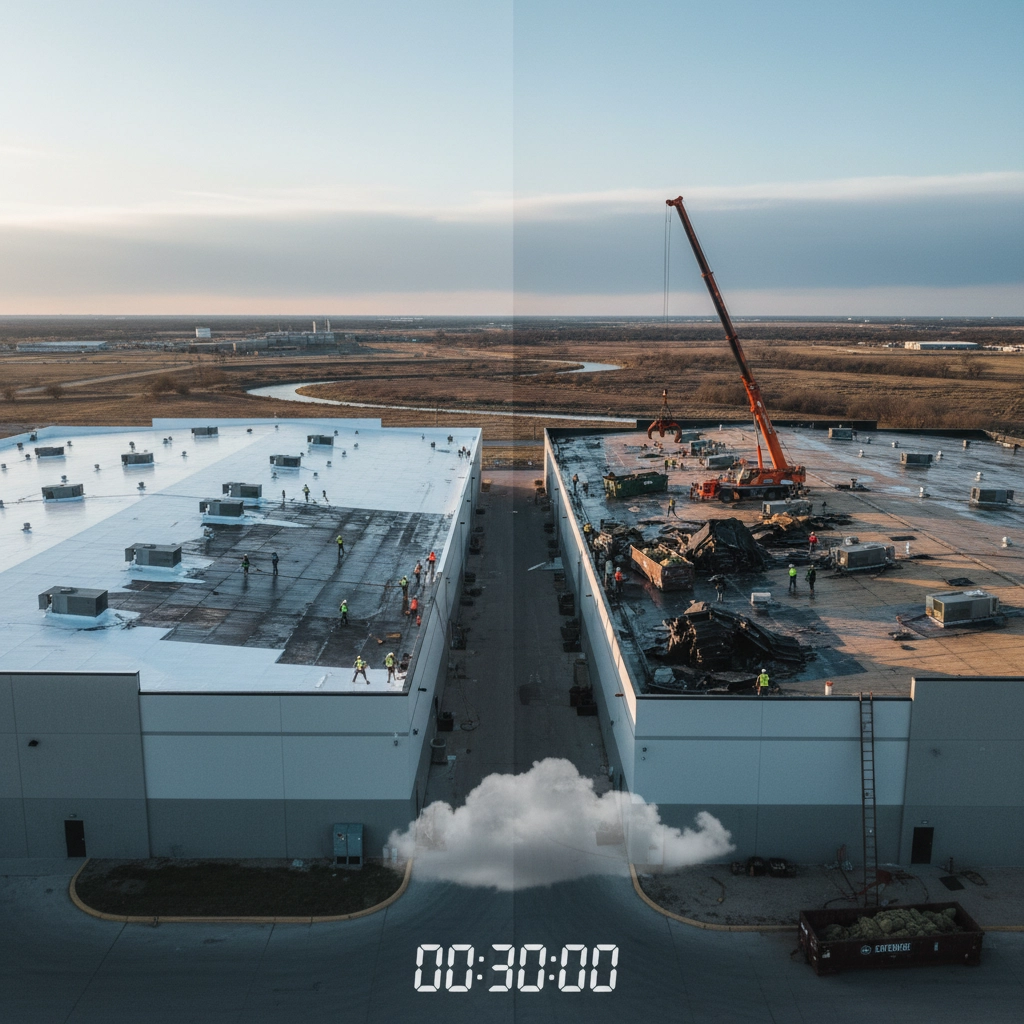
When your commercial roof in Texas or Oklahoma starts showing its age, you're facing one of the most critical decisions for your facility: whether to recover (overlay a new roof system over the existing one) or tear off everything and start fresh.
Here's the reality: this choice impacts your budget, operational downtime, and long-term building performance more than any other roofing decision you'll make. And in Texas and Oklahoma's punishing climate of scorching heat, violent hailstorms, and relentless wind, getting it wrong can cost you dearly.
The good news? You don't need weeks of analysis paralysis to make the right choice. With the proper framework, facility managers can make this critical decision in about 30 minutes, without the guesswork or risk that typically comes with significant capital expenditures.
By the time you finish reading this, you'll know exactly how to evaluate your commercial roof using our proven 5-gate decision tree. You'll understand when a recover makes financial sense (and when it's a costly mistake), how Texas and Oklahoma's unique climate factors into your decision, and most importantly, how to protect your facility and budget from the consequences of choosing poorly.
Request a Roof Risk Assessment - Before diving in, consider scheduling a professional assessment that includes infrared scanning and core cuts. This typically costs $1,500-$3,000 but can save you tens of thousands by ensuring you're making decisions based on facts, not assumptions.
Let's start with the basics, as terminology matters when discussing with contractors and making budget decisions.
Recover (Overlay): Installing a new roof membrane and components directly over your existing roof system. The old roof stays in place, serving as a substrate for the new system. Think of it like putting a new suit over your old clothes; it works, but there are obvious limitations.
Tear-Off (Complete Replacement): Removing everything down to the structural deck before installing a completely new roof system. This gives you a clean slate and complete visibility into any underlying problems.
Partial Replacement: A hybrid approach where you tear off only damaged or problematic sections while recovering others. This is often driven by moisture findings or budget constraints, but requires careful detailing at transitions.
Here's what facility managers often miss: building codes (IBC and local amendments) limit you to a maximum of two roof assemblies. If you already have two layers, the decision is made for you; tear-off is mandatory, regardless of budget preferences.
From a warranty perspective, manufacturers typically offer their most extended and most comprehensive coverage for tear-off installations, while recovers often come with reduced warranty terms and more exclusions.
Every commercial roof must pass through five critical evaluation gates before you can confidently choose between recover and tear-off. Fail any gate, and the decision becomes clear. Let's walk through each one.
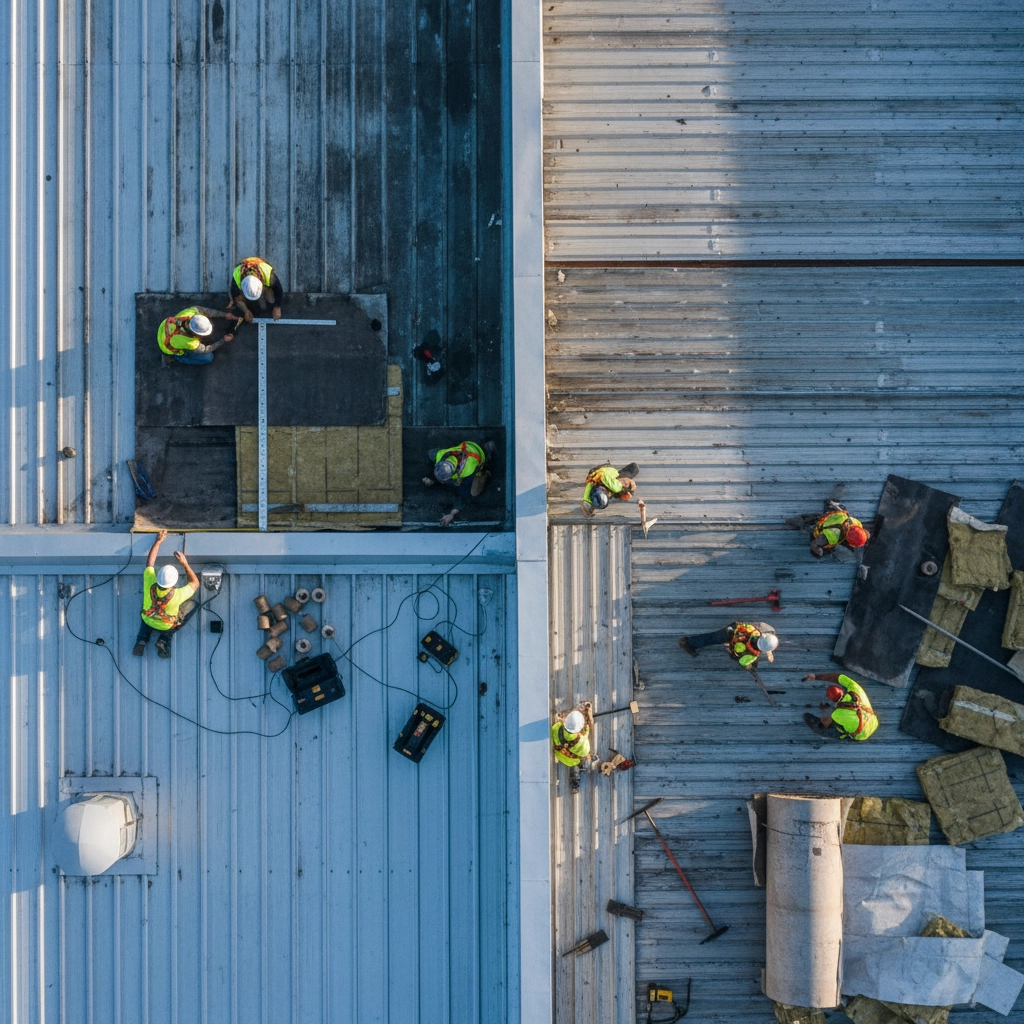
This is where most recover decisions live or die. Trapped moisture in your existing roof system is like a ticking time bomb; it'll eventually cause membrane deterioration, insulation failure, and structural damage.
Infrared (IR) scanning reveals moisture patterns invisible to the naked eye by detecting temperature differences in wet versus dry insulation. In the climate of Texas and Oklahoma, this is absolutely critical because high humidity and temperature swings can cause moisture to migrate through your roof system in ways that aren't immediately obvious.
Core cuts validate IR findings by providing physical samples of your roof's layers. A qualified inspector should take at least 3-5 cores in different areas, especially where IR indicates potential moisture issues.
The tolerance thresholds we use:
Here's a critical insight from our Texas projects: in high-humidity areas like Houston or Dallas during summer months, latent moisture can migrate after major rain events. That's why we recommend re-testing after significant weather if your initial assessment is borderline.
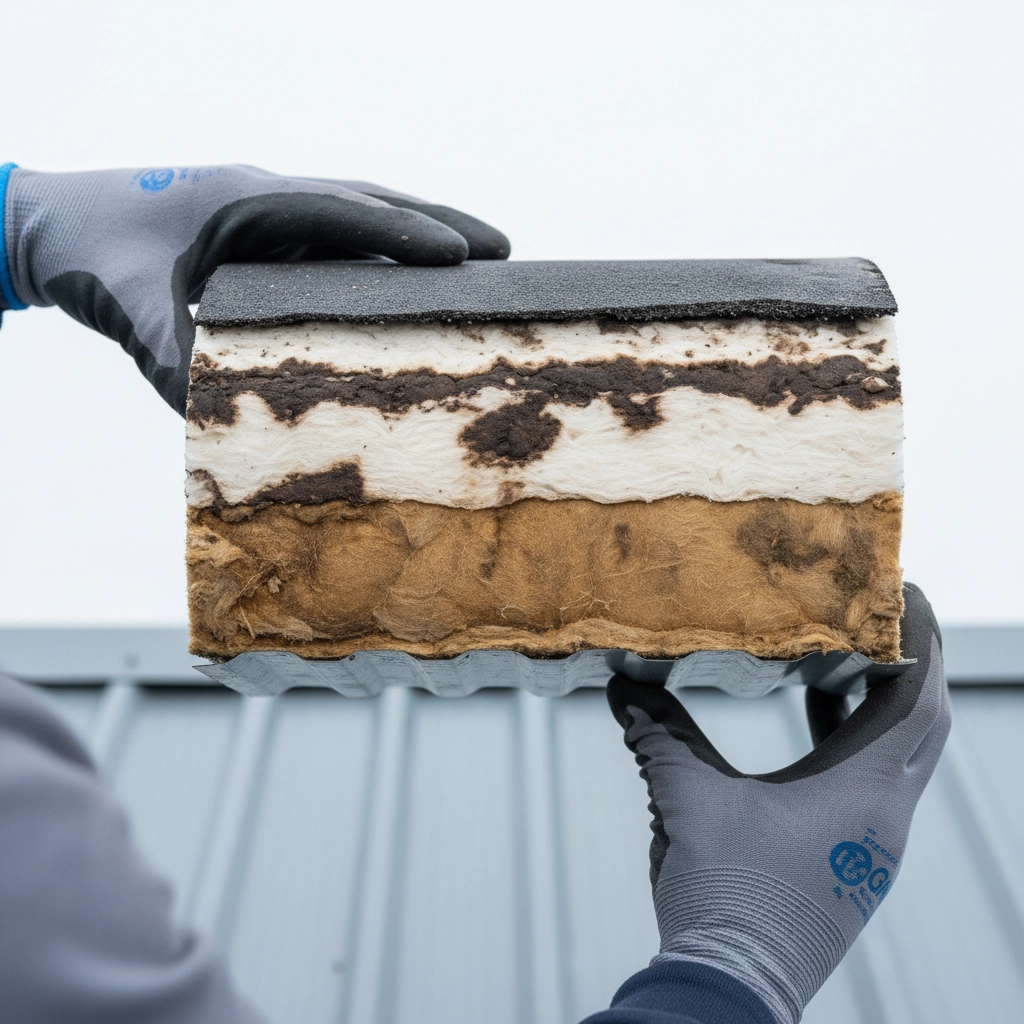
Your structural deck, whether steel, concrete, or wood fiber, must be capable of supporting the additional load and providing adequate fastener hold for the new system.
In Texas and Oklahoma, we commonly encounter:
The key question isn't just whether the deck looks okay; it's whether it can provide the pullout strength required for your new roof system. After 10-15 years in our climate, fastener patterns often deteriorate, and what looks solid on the surface may not meet current wind uplift requirements.
If core sampling reveals significant deck corrosion or structural issues, recover becomes a non-starter. You need full access to repair or replace deck sections properly.
Texas and Oklahoma have specific energy code requirements that often drive the recover vs. tear-off decision. Current code typically requires:
Here's where many facility managers get caught off guard: adding insulation to meet current codes can push your total roof height beyond parapet walls or create clearance issues with HVAC equipment. If bringing your roof up to code requires more than 3-4 inches of additional insulation, you may exceed practical height limits, forcing a tear-off approach.
Pro tip: Verify local amendments before making assumptions. Many Texas and Oklahoma municipalities have adopted more stringent requirements than state minimums.
In the I-35 corridor, Oklahoma City, and Dallas-Fort Worth, areas known for severe weather, wind uplift resistance isn't optional. Your recover must meet FM 1-90 or equivalent standards, which often require specific fastener patterns and attachment methods.
The challenge with recovers is that you're building on existing fastener patterns that may not align with current requirements. Many roofs installed 10-15 years ago fail to meet today's uplift standards, particularly after repeated exposure to hailstorms and high winds.
Warning: Never assume your existing fastener patterns are adequate. We've seen too many recovers fail during storms because contractors didn't properly evaluate or supplement the attachment system.
For high-wind areas, recovers often require additional fastening or coverboard systems, which can eliminate much of the cost advantage over tear-offs.
This gate often gets overlooked until it's too late. Manufacturer warranties for recovers typically come with more limitations and exclusions than tear-off installations.
Critical warranty considerations:
In Texas and Oklahoma's severe weather environment, having robust warranty protection isn't just nice to have; it's essential financial protection. Poor detailing is the number one failure point for recovers in high-wind zones, and many manufacturers know it.
Factor
recover
Tear-Off
Average Cost per SF
$8-12
$12-18
Project Duration
1-2 weeks
3-6 weeks
Operational Disruption
Minimal
Moderate to High
Waste Disposal
Minimal
2-4 tons per 1,000 SF
Long-Term Risk
Moderate (if moisture-free)
Low
Warranty Duration
10-20 years
20-30 years
Future Flexibility
One-time option only
Full flexibility
The upfront savings of a recover are undeniable, typically 25-35% less than a tear-off. But here's what the cost comparison doesn't show: the risk premium you're accepting and the shortened replacement cycle.
When you recover, you're betting that your existing roof system will remain stable and moisture-free for the life of the new membrane. In the climate of Texas and Oklahoma, that's a significant gamble.
Last spring, we evaluated a 50,000-square-foot distribution center in Fort Worth facing a critical roofing decision. The facility manager faced pressure to minimize downtime during their busy season, all while addressing obvious membrane deterioration.
The Challenge: Infrared scanning revealed less than 5% wet insulation area, primarily around older HVAC penetrations. The single-layer TPO system was 12 years old with good adhesion patterns but failing reflectivity.
Our Solution: Half-inch polyiso coverboard with a new TPO recover system. This approach restored the roof's reflectivity (critical for controlling summer heat gain), provided additional insulation value, and avoided the operational disruption of a full tear-off.
The Results: The project was completed in 10 days during a planned maintenance window. Total cost was 35% less than tear-off estimates, and the facility maintained normal operations throughout the installation. The enhanced insulation and reflectivity reduced summer cooling costs by approximately 12%.
ROI Analysis: The $180,000 recover investment versus $275,000 for tear-off saved $95,000 upfront. With reduced energy costs and avoided downtime, the payback period was under 18 months.
This project succeeded because it passed all five gates cleanly, with minimal moisture, sound deck, code compliance, adequate attachment, and manufacturer approval for recover.
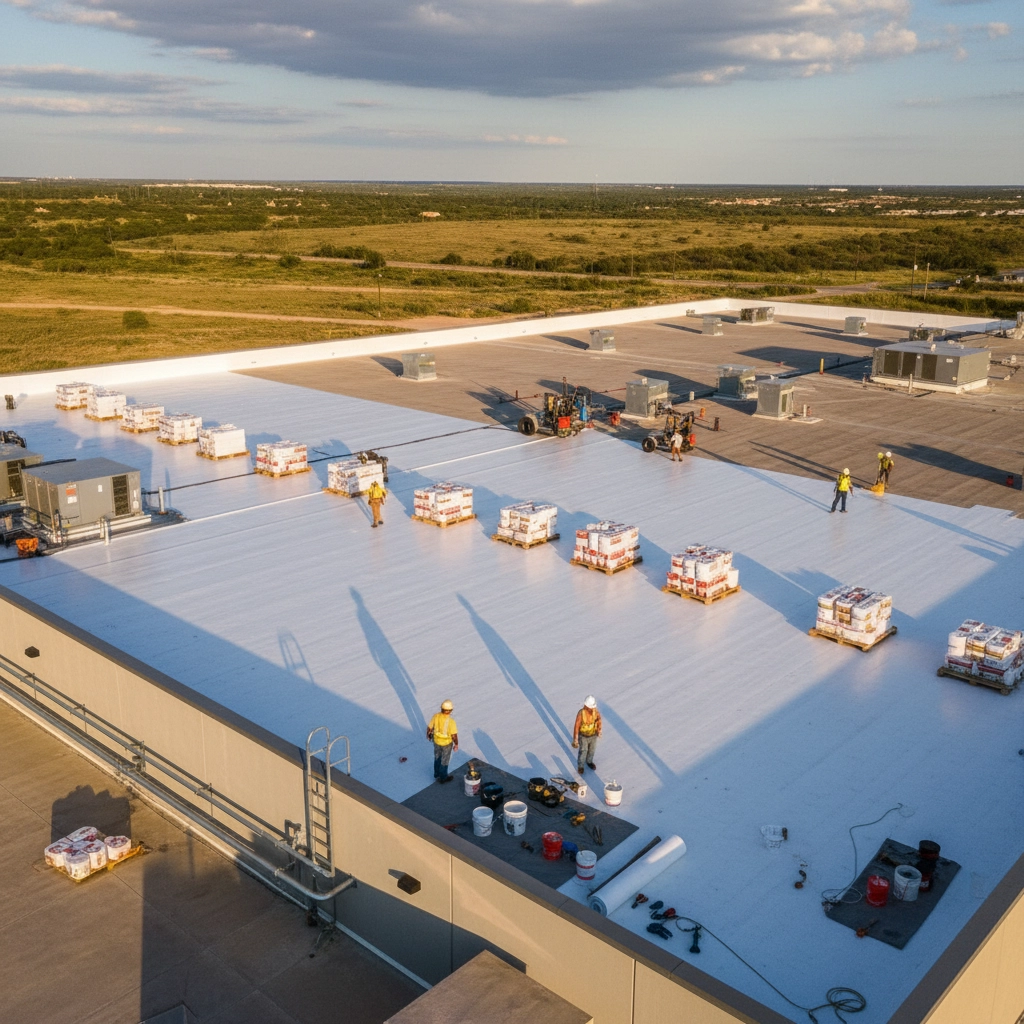
Ignoring moisture indicators: We've seen facility managers move forward with recovers despite obvious ponding water or suspicious staining. Trapped moisture always gets worse, never better.
Assuming existing flashings are adequate: Old edge metal, coping, and flashing systems often can't accommodate the additional thickness of a recover system. Reusing these components is false economy.
Failing to verify local R-value requirements: Building codes change, and what met requirements when your roof was installed may not meet current standards. This oversight can force expensive modifications mid-project.
Not confirming manufacturer recover approval: Some membrane systems and deck types aren't approved for recover applications. Getting this wrong voids your warranty before you start.
Underestimating wind uplift requirements: In Texas and Oklahoma's high-wind environments, using inadequate attachment patterns is asking for catastrophic failure during the next severe storm.
Before making your final choice, work through this systematic evaluation:
Immediate Assessment:
Risk Evaluation:
Download our complete Recover vs. Tear-Off Decision Checklist to ensure you're evaluating all critical factors systematically. This tool has helped hundreds of facility managers make confident decisions backed by data, not guesswork.
Ready for your roof risk assessment? Contact TriVAN Roofing for a comprehensive evaluation, including infrared scanning and core cut analysis. We'll provide you with the facts you need to make this decision with confidence.
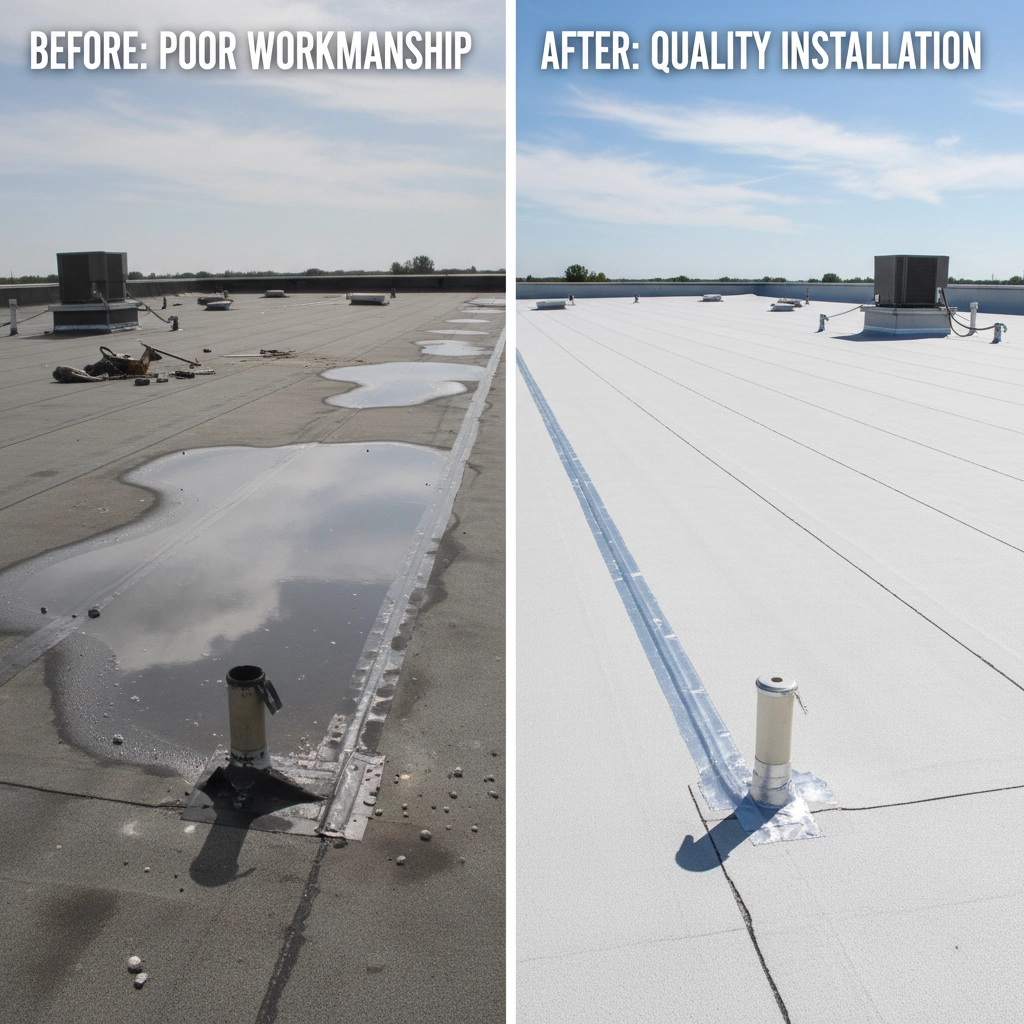
How much wet insulation is "too much" for a recover?
Generally, more than 20% wet area makes recover financially impractical. Between 10-20% requires careful cost-benefit analysis, as you'll need to remove wet sections anyway. Less than 10% can often be addressed through targeted repairs during recover installation.
Can I recover over two existing roofs in Texas or Oklahoma?
No. Building codes limit commercial buildings to a maximum of two roof assemblies. If you already have two layers, a tear-off is mandatory regardless of condition or cost considerations.
How long does a TPO recover last in our climate?
A properly installed TPO recover typically provides 12-18 years of service life in Texas and Oklahoma, compared to 20-25 years for a tear-off installation. The reduced lifespan reflects the challenges of building over existing systems and typically reduced warranty coverage.
Will a recover affect my insurance or FM Global rating?
Most commercial insurers don't distinguish between recovers and tear-offs for coverage purposes, but some FM Global ratings consider installation quality and warranty coverage. Consult your risk management team before deciding, as some policies have specific requirements for roof replacement approaches.
What permits or code reviews are required for recovers versus tear-offs?
Both typically require building permits, but recovers may have additional structural review requirements due to the added load. Some municipalities require more extensive plans and calculations for recovers. Check with your local building department early in the planning process.
Should I consider a partial tear-off approach?
Partial tear-offs work well when moisture issues are localized to specific areas (less than 30% of the total roof area). This hybrid approach allows you to address problem zones while recovering sound sections, but requires careful attention to transition details and can complicate warranty coverage.
The choice between recover and tear-off isn't just about upfront costs: it's about protecting your facility, minimizing risk, and making the most of your roofing investment. In Texas and Oklahoma's challenging climate, the stakes are too high for guesswork.
When you're ready to move forward with confidence, contact our team or call 1-877-4TRIVAN for a comprehensive roof assessment. We'll help you navigate this decision with the expertise and data you need to protect your facility for years to come.